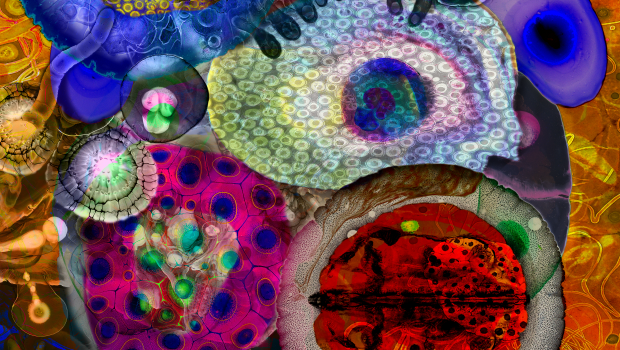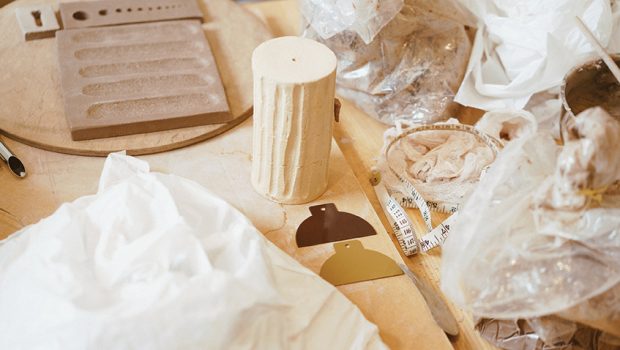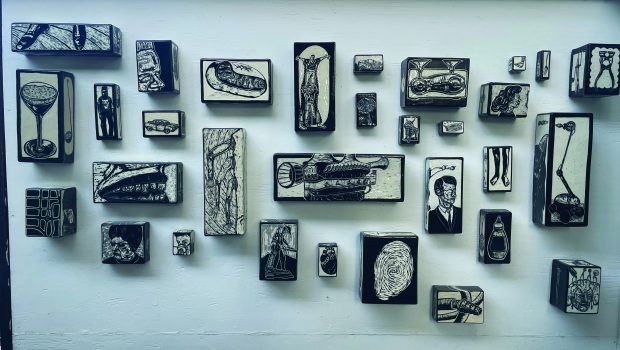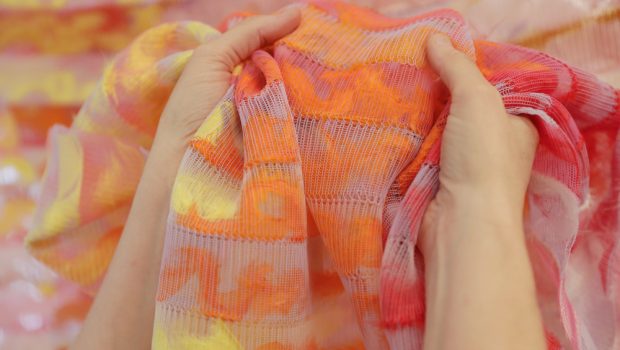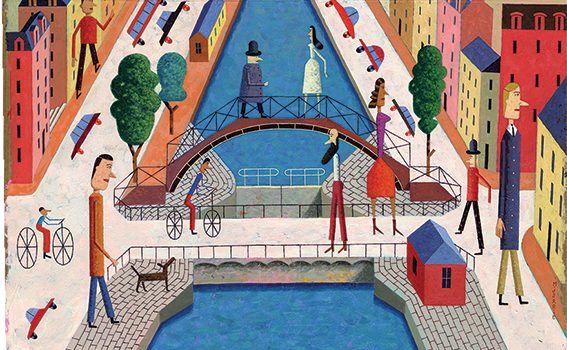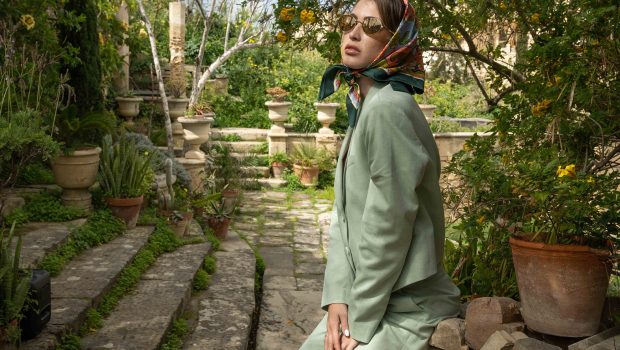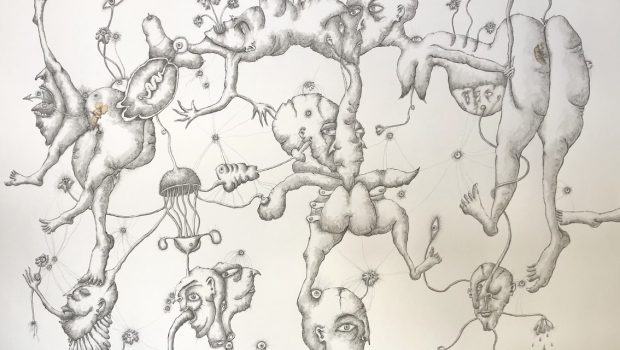The Art of Simon Laveuve
Vamp meets Simon Laveuve, a French artist, born and bred in the Parisian suburbs.
At a scale of 1/35, Simon Laveuve’s meticulously crafted miniature constructions open a window into imagined post-apocalyptic worlds, revealing troves of clues about the absent occupants of each dwelling. His works range from colourful bunting strung between posts to framed pictures on crumbling walls, each piece echoing a story. Drawing from his experiences growing up in the culturally diverse Parisian suburbs, Laveuve’s creations are a fusion of his memories and artistic vision. In the bustling 13th arrondissement of Paris, where Chinese, Vietnamese, Cambodian, and Laotian cultures blend seamlessly into the city’s fabric, Laveuve found a rich source of inspiration. “The Asian district of Paris is a monument of Île-de-France that never ceases to inspire me… I deliberatey mixed genres and cultures to merge shapes, colours, and to tell this story,” he explains.
Vamp Magazine caught up with the artist to discuss his influences, creative journey, and the intricate details that define his unique miniature universe.
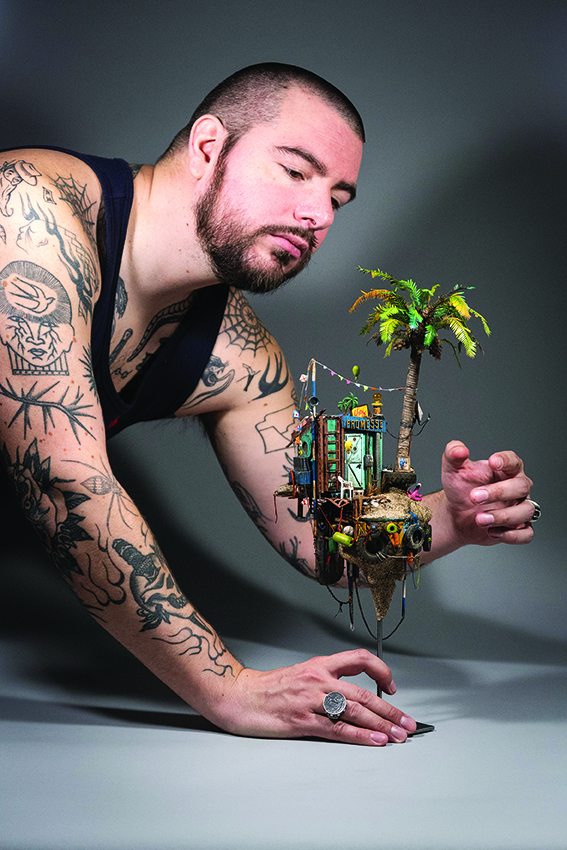
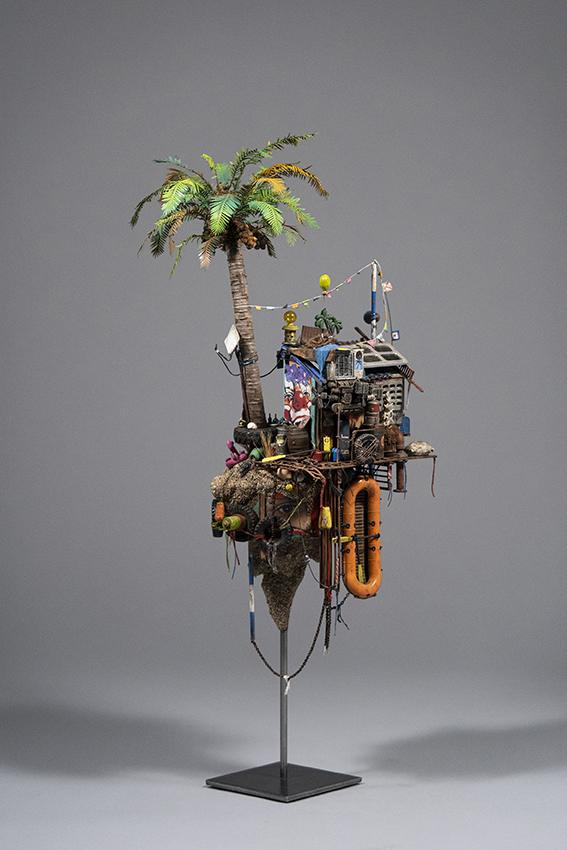
How did growing up in the Paris suburbs influence your perspective on urban life and architecture?
The Parisian suburbs are dense and constantly changing, teeming with culture and diversity. Home to a wide range of housing types, from detached houses to high-rise towers and makeshift shelters, these suburbs influenced my perspective on architecture and urban life. Housing is the common denominator for all suburbanites, and it has become the focal point of my work.
Can you discuss any particular elements of Gailhoustet and Renaudie’s work that resonate deeply with your art?
From my crude tower made of uncoated concrete, I witnessed Renaudie’s unique architectural approach. “Les Étoiles d’Ivry,” inspired by brutalism and the modern movement, broke away from standardisation with its triangles, disarticulated floors, double levels, and inaccessible spaces, all forming stars. This non-conformist architecture deeply influenced my own artistic approach.
What initially drew you to photography, and how did your career in fashion, music, reportage, and publishing shape your artistic approach?
My earliest photographs aimed to create a universe, transfiguring reality into something otherworldly. Photography became my storytelling medium. I started with still life and portraiture, learning about framing and lighting like a painter. Travelling through the city and suburbs, capturing portraits for music magazines and album covers, taught me to depend on the interplay of place and light. This led to my first miniature, seeking a unique setting free from light’s constraints.
Since 2016, you’ve been creating a unique miniature universe. What sparked this transition from photography to creating these intricate miniatures?
The desire to escape the constraints of reality and the digital realm spurred my transition. My first miniatures were ephemeral, crafted for photography. Working by plane, lighting, and framing, I dismantled each setup after photographing. This process evolved into a pursuit of tangible creation, distancing myself from digital retouching.
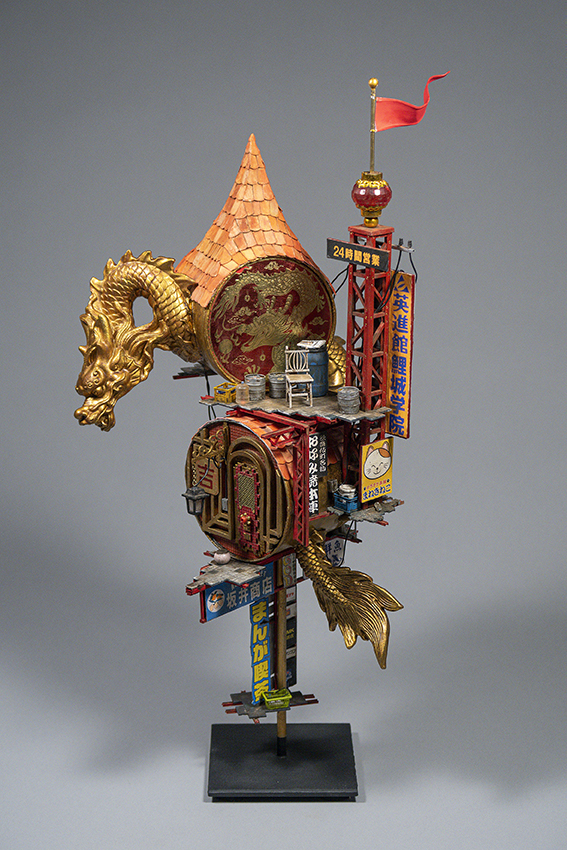
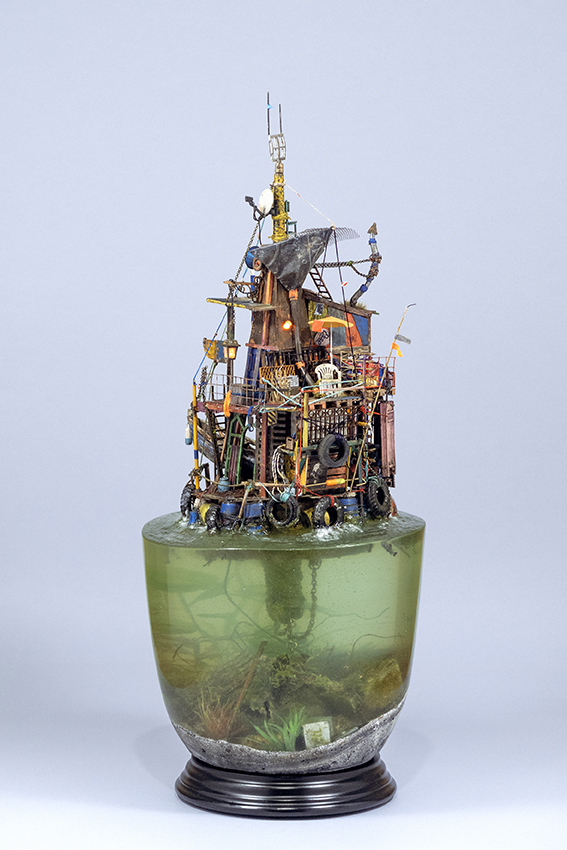
The concepts of habitat and survival are central to your art. What messages are you trying to convey through these themes?
Through my work, I translate fears and dreams about shelter and survival, intrinsic to human nature. The series “IDF2068” imagines the homes of tomorrow amid environmental decline. These future dwellings, from landfill huts to sea-bound makeshift homes, mirror today’s reality and suggest a possible norm for tomorrow.
How does your background in photography influence the narratives and details in your miniatures?
Though secondary now, photography remains integral to my work, providing an immersive dimension and serving as an archiving tool. My photographs capture the essence of my sculptures, which reside globally with collectors, an honour for me.
What role do reclaimed materials play in your creations, and why is giving objects a second life important to you?
Reclaimed materials guide my creations with their shapes. Giving objects a second life feels natural, as these materials often become the starting point for my miniatures. CDs, tin cans, and other discarded items find new purpose in my hands.
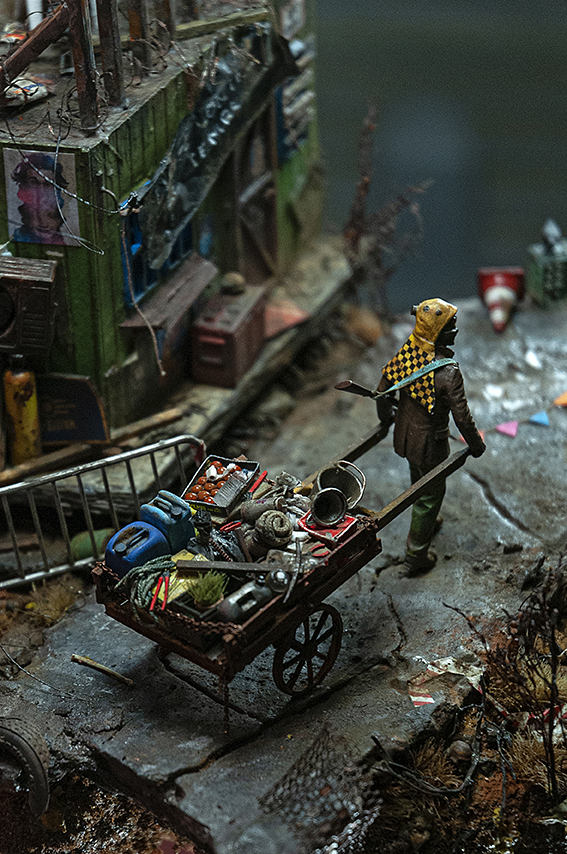
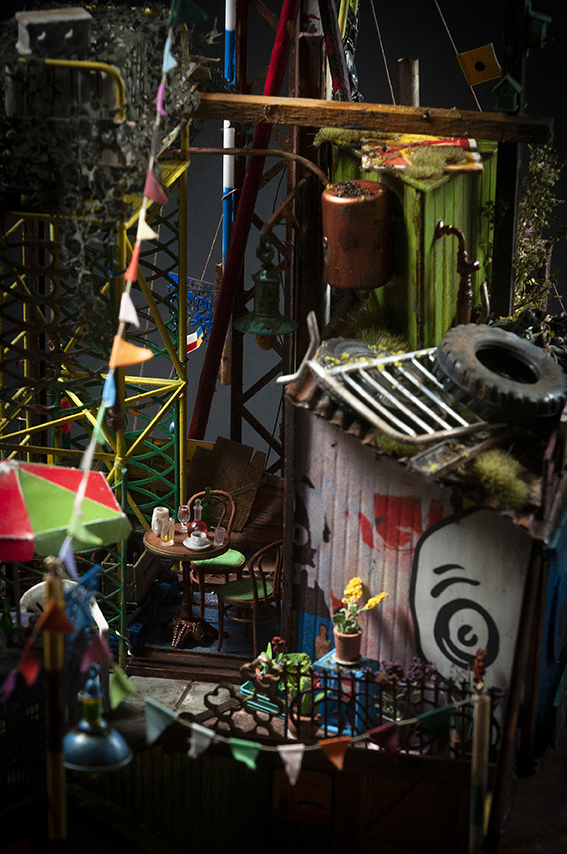
Your pieces often depict themes of shelter and human absence. What drives your exploration of these themes?
I’m fascinated by the trace of human presence rather than the presence itself. Occasionally, I include masked or indefinable human figures, inviting viewers to imagine themselves in my miniature world. Creating shelters reflects humanity’s primal essence.
Can you elaborate on the symbolism behind the concepts of height, inaccessibility, protection, and abandonment expressed in your work?
These concepts represent humanity’s quest for transcendence, exploration, and milestones. They symbolise our need to build, protect, and sometimes abandon.
How do you hope viewers will interpret and engage with the themes of resis- tance and insubmission in your art?
My work mixes resistance and resilience, offering a vision of “The Day After.” It’s an invitation to see and exploit the world differently, without demanding commitment.
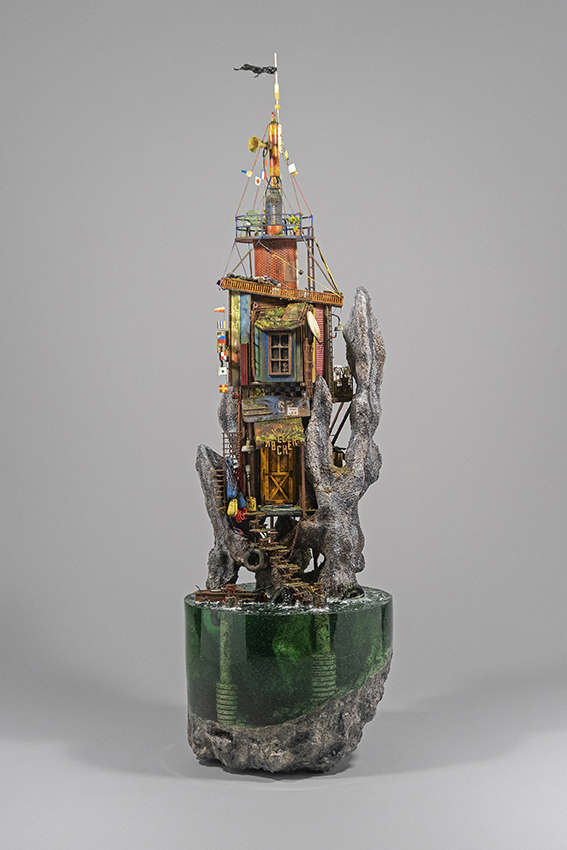
IDF2068 – 2023
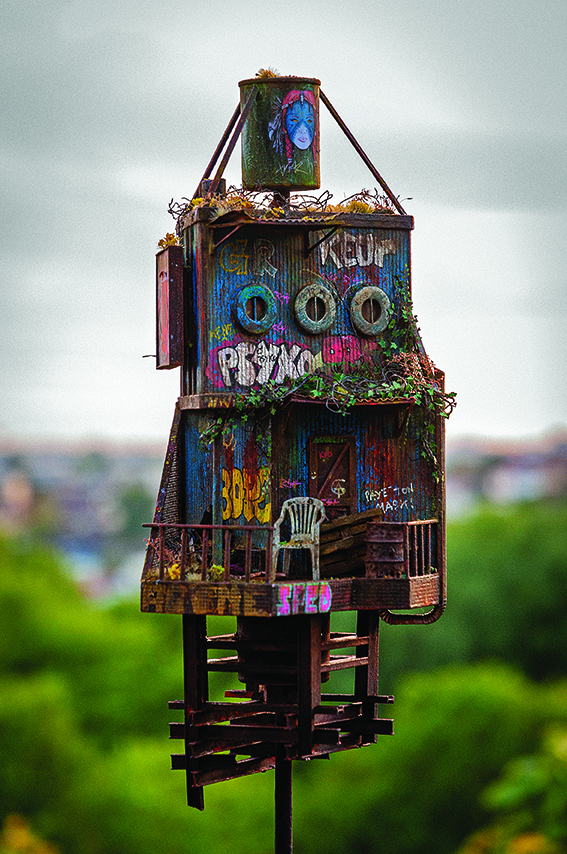
Sculpture
2020
What reactions or reflections from viewers have surprised or inspired you the most?
Viewer reactions often focus on detail, from pragmatic evaluations of structures to imaginative narratives. This variety inspires me technically and narratively.
How do you see your work evolving in the coming years?
I hope to continue exhibiting my work, creating immersive universes that blend sculpture, photography, and soundtracks. This sensory journey gives meaning and life to my art.
Are there any new themes or techniques you are excited to explore in your future projects?
My work evolves naturally, my ideas lead me to new experimental techniques.
What advice would you give to aspiring photographers and artists who are looking to develop their unique voice and style?
Trust your intuition and create something that appeals to you first and foremost.
For more info: @simonlaveuve


